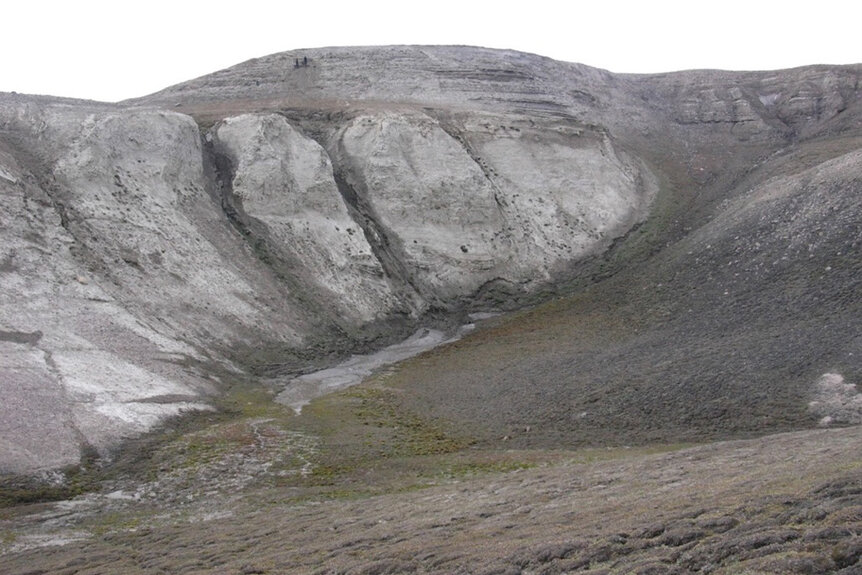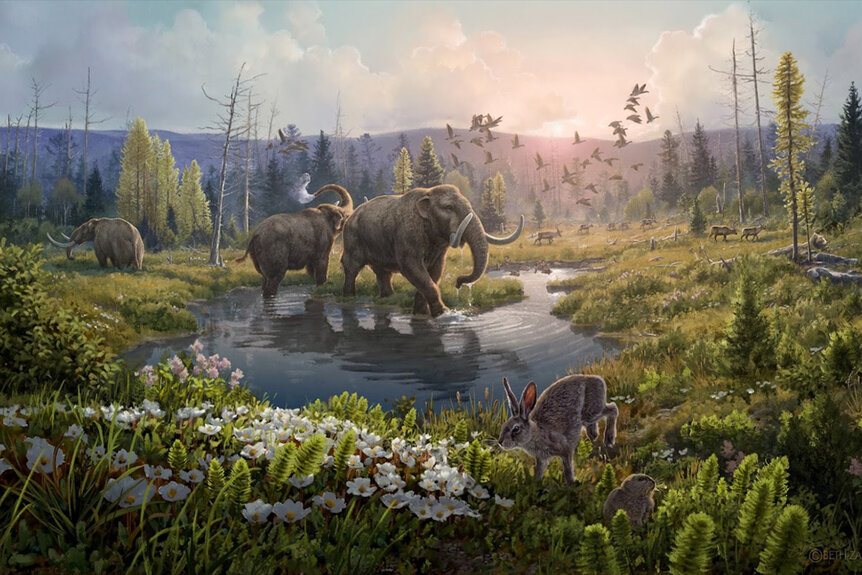Create a free profile to get unlimited access to exclusive videos, sweepstakes, and more!
Scientists use environmental DNA to reconstruct entire 2-million-year-old ecosystem
Everywhere you go, there you are. Forever.

Dr. John Hammond had a dream to build a park where people could observe the wondrous animals of the past, and he called that dream Jurassic Park. It turned out to be more of a nightmare, you might have heard about it. Of course, that didn’t stop enterprising business-people from picking up where Hammond left off. You can watch how that played out in the extended cut of Jurassic World Dominion, streaming right now, on Peacock.
None of it could have happened, not the wonder on Dr. Sattler’s face at first seeing a sauropod or the fatal events that followed, if it weren’t for ancient DNA preserved in amber. We all know that DNA preservation doesn’t really work that way, and we’re unlikely to ever have a real-world dinosaur park — which might be for the best, if we’re really honest with ourselves — but scientists are reconstructing ancient ecosystems thanks to DNA not inside of amber, but in the soil itself. That’s according to a recent paper published in the journal Nature.
Mikkel Pedersen is an associate professor at the Globe Institute at the University of Copenhagen and co-lead author of the recent paper. He’s spent years studying a set of unusual sediment mounds at the Kap København Formation in northern Greenland. It’s there, that scientists recently succeeded at extracting 2-million-year-old DNA from the soil.
“It was discovered by one of the professors at our institute, Svend Funder. He was surveying Kap København and found geological formations of sediments, sand and clay, with different organic materials embedded in it. They looked at the fossils they could find in the deposits, plant fragments and insect remains, and found it was about 2 million years old,” Pedersen told SYFY WIRE.
Preservation at the site was extraordinary. It’s reported that Funder was pulling fully preserved twigs with small cones still attached out of the ground. It’s understood that these sediment mounds built up over the course of 20,000 years before being locked in permafrost. The deep and persistent cold could feasibly slow decay and extend the shelf life of any organic materials which happen to get trapped there. That got scientists thinking that if there was anywhere in the world that might preserve DNA from further back than about half a million years ago, this was that place.
Already, Kap København proved a valuable site for plant and insect fossils but vertebrate fossils were harder to come by. Consequently, the types of ecosystems which existed in northern Greenland during the early Quaternary period aren’t well understood. Even scientists knew they were unlikely to uncover significant vertebrate remains from the site, they might be able to find genetic evidence of their presence in the dirt.
“It builds on the conception that all organisms in a landscape, as they live in the environment, they leave genetic traces behind. That could be trees dropping leaves or animals losing hair or skin cells. Even peeing or pooping. Those would all be sources of DNA,” Pedersen said.
RELATED: That wild smell in the air at the zoo has DNA in it
Paleontologists can then go to these sites and find the genetic litter left over by ancient animals. Pulling that off hasn’t been an easy endeavor. Scientists started 16 years ago, trying different ways to get DNA out of the sediments at Kap København, but nothing worked. We didn’t yet have the tools or the know-how to get at the information beneath our feet. That has since changed. Now, researchers can randomly sequence whatever happens to be in their sample and then work their way backward, referencing against known genetic profiles.
A combination of scientific and technological innovation over the last couple of decades and the unique characteristics of the Kap København site made it possible for scientists to not just break the previous DNA preservation record, but shatter it.
“The previous oldest DNA from a terrestrial environment was about half a million years old,” Pedersen said, and when asked if he thought we might one day recover DNA that’s even older, he continued, “I think we’ll hit a physical barrier at some point, but I think we’ll be able to push it further back. Two million years is not that barrier but what that barrier is… every time we say we’ve got it figured out, we suddenly find DNA preserved in other sorts of materials for longer times. I wouldn’t draw a hard line, especially not now.”
All in all, researchers took 41 samples from five different locations within the formation and carried out their shotgun sequencing approach to see what they had scooped up. Those samples contained DNA fragments from a wide range of plants and animals including birch and poplar trees, hares, reindeer, rodents, geese, and mastodons.
That last one was something of a surprise. According to Pedersen, it is well known that mastodons were living on the North American continent during that time period, but it was never suspected they had made it as far north as the northernmost parts of Greenland. In fact, no fossil evidence of mastodons has ever been found in the area, but now we know they did live there, thanks to the environmental DNA they left behind.
Paleontology, at least in the popular conversations, so often centers on individual specimens, charismatic animals we can envision living on the landscape. It’s hard not to do that when you’re looking a preserved animal in the face. Environmental DNA, by contrast, allows scientists and the public to glimpse a more complete and more complex ecosystem. Not one organism but scores of them all living, eating, shedding, and bleeding in the same space.
Beyond Jurassic World Dominion, check out Jurassic Park to Jurassic World the Greatest Moments, where another group of organisms recreates ancient environments, now streaming on Peacock!




























